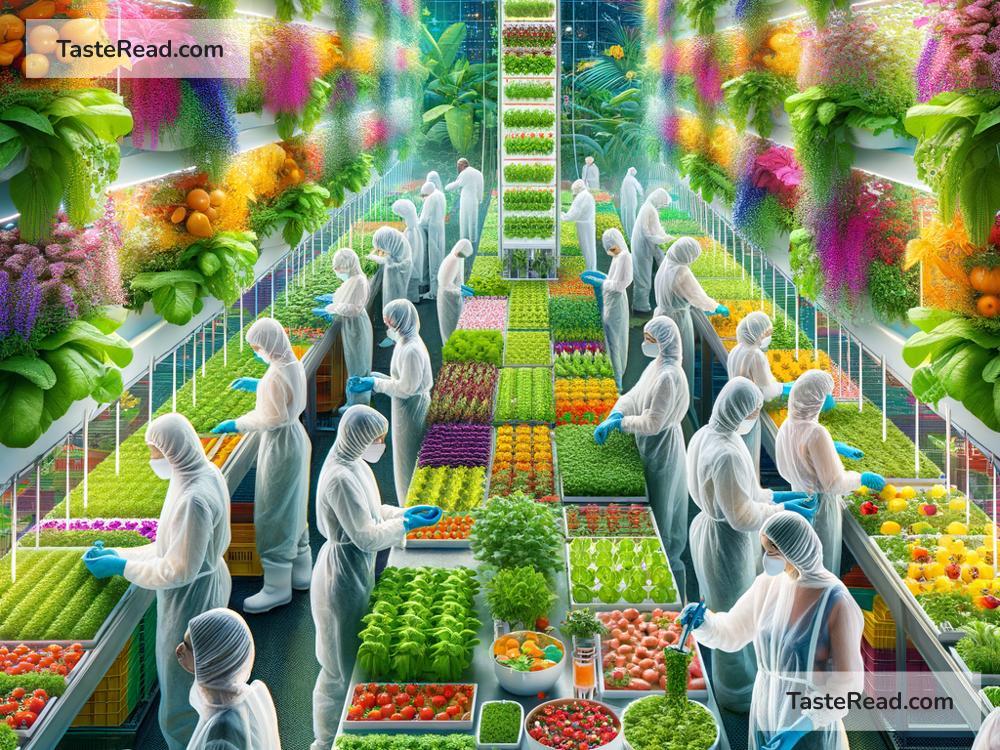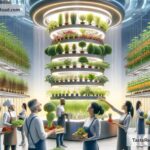The Future of Food and Participatory Sustainability: A Simple Guide
In recent years, people around the world have started thinking more about their food—where it comes from, how it’s made, and its impact on the planet. This change in thinking has sparked exciting ideas about the future of food and the role we all play in creating a sustainable future. Let’s explore these ideas together in simple terms.
What Does “Future of Food” Really Mean?
The “future of food” is all about how we’ll grow, produce, and eat food in the years to come. Today, we face big challenges like climate change, soil loss, overfishing, and food waste. At the same time, more people than ever in history need to eat every day. Scientists, farmers, and food companies are working on solutions to make sure there’s enough good food for everyone, without harming our planet.
So, what does this future look like? It will likely include:
- Smarter farming: Using robots, drones, and AI to help farmers grow food more efficiently while protecting the environment.
- Alternative proteins: Foods like plant-based meat, lab-grown meat, and insect-based protein could be key to feeding the world without relying as much on traditional livestock farming, which is hard on the environment.
- Vertical farms: Growing food in tall buildings instead of fields to save space and water.
- Local food systems: Producing food closer to home, reducing the need for transportation that contributes to pollution.
What Is Participatory Sustainability?
Now, let’s talk about “participatory sustainability.” It may sound fancy, but it simply means working together to make the planet healthier for everyone. Instead of leaving decisions about sustainability to big companies or governments, participatory sustainability invites regular people—like you and me—to get involved. It’s about sharing ideas, taking action, and shaping the future together.
At its heart, participatory sustainability is built on two key ideas:
- Collaboration: People from all backgrounds—including farmers, scientists, chefs, activists, and consumers—should work together to solve problems and make smarter choices about food and the environment.
- Action: Small actions taken by lots of people can make a big difference!
How Can People Participate in Building a Sustainable Food System?
You may be wondering, “What can I do to help save the planet while ensuring everyone has enough to eat?” Thankfully, there are many simple ways to get involved in participatory sustainability:
-
Support local farmers: Buy food from farmers’ markets or join a community-supported agriculture (CSA) program. Local farms often use sustainable methods and shorten the supply chain, which reduces carbon emissions.
-
Eat responsibly: Try eating more plants and less meat. You don’t have to become vegetarian, but reducing your intake of highly processed or resource-intensive food (like beef) helps the planet. Also, watch out for food waste—use leftovers and store food properly to keep it fresh!
-
Experiment with new foods: Explore alternative proteins like tofu, lentils, or even insect-based snacks. Trying these foods helps grow demand for sustainable options, which ensures they become more available for everyone.
-
Learn and share: Educate yourself about environmental challenges like climate change and food security. Share what you learn with friends and family to inspire change.
-
Get involved in your community: Start a garden, organize food-related events, or join sustainability projects in your neighborhood. Many communities are setting up co-ops, urban farms, food banks that rescue surplus food, and other fun ways to get involved.
-
Advocate for change: Support policies that protect natural resources, encourage eco-friendly farming, or reduce pollution. Send a letter to your representatives or participate in campaigns for cleaner, greener food systems.
Innovations in Food Sustainability
In addition to personal efforts, technology is playing a big role in transforming food systems. Let’s take a look at some cool innovations making headlines:
- Precision agriculture: Farmers now use drones and satellites to monitor crops, saving water, reducing pesticides, and boosting productivity.
- Waste-reducing tech: Apps and tools link grocery stores with charities to donate unsold food rather than throwing it away.
- Eco-packaging: Scientists are creating biodegradable and edible food packaging to reduce plastic waste.
- Lab-grown food: Experts can grow meat, fish, and even dairy products in labs using cells. This could massively reduce the need for resources like land and water.
These technologies are working hand in hand with the actions of everyday people to create a food system we can rely on well into the future.
Why Is This So Important?
Food plays a major role in shaping our health, culture, and environment. If we ignore sustainability, future generations might struggle with food shortages, degraded ecosystems, and unpredictable climates. By working together, we can protect our planet while ensuring safe, affordable food for everyone.
Plus, participatory sustainability isn’t just about helping the environment—it’s also about fairness. Decisions about food and sustainability shouldn’t be limited to a few corporations or governments. Everyone should get a say, including farmers, communities, and consumers. When we all work together, we build a food system that reflects shared values.
The Bottom Line
The future of food is exciting, but it’s also a big responsibility. Whether through innovation or simple daily actions, we all have a role to play in building a sustainable food system. Participatory sustainability reminds us that change happens fastest when people come together to share ideas and act boldly.
So, the next time you shop for groceries, cook a meal, or plant something in your garden, remember: your choices matter! Together, we can shape a world where food is healthy, sustainable, and fair for everyone.
What do you think the future of food looks like? Share your ideas and join the conversation!


